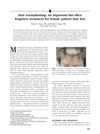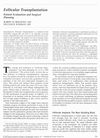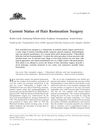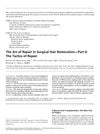Hair Transplantation: Current Concepts and Techniques
October 2005
in “
Journal of Investigative Dermatology Symposium Proceedings
”
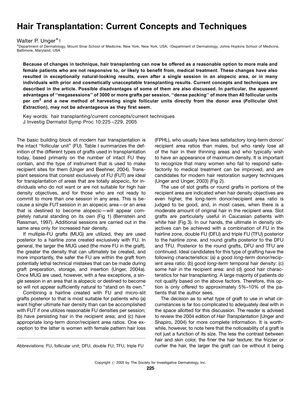
TLDR The document concludes that hair transplantation is recommended for those not helped by medical treatments, but warns that high-density transplants may lower hair survival rates.
The 2005 document highlights advancements in hair transplantation, focusing on the use of follicular units (FUs) for natural-looking results and discussing the potential benefits and drawbacks of various techniques such as multiple-FU grafts (MUGs), "megasessions," "dense packing," and Follicular Unit Extraction (FUE). It stresses the importance of planning for future hair loss and maintaining a reserved donor area. The document cites a study indicating that higher FU densities per session may lead to lower survival rates, with an optimal density of about 20-25 FU per cm² recommended for acceptable survival rates. It also compares micro-slit grafting to follicular unit transplantation (FUT), suggesting that while FUT may provide better initial results, micro-slit grafting can allow for increased density in later sessions. The conclusion recommends hair transplantation for patients who do not respond to medical treatments or are dissatisfied with previous transplants, but advises caution regarding the potential impact on hair survival of high-density transplants.
